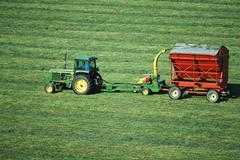- Home
- Cash Bids
- Weather
- MFA Info
- Markets
- News
- Links
- MFA Precision Advantage
CFX-750™ display
- Precision Planting 20/20
- TRUESIGHT
- INTEGRA display
- EDGE display
- AUTOPILOT System & RTK
- SEED COMMAND FOR SURESTOP, SUREVAC & TRU COUNT
- DIRECT COMMAND
- Variable Rate Application VRT
- INSIGHT Display
- EZ Steer
- EZ Boom
- EZ Guide 500
- Soil Sampling
- Mapping Planting Data
- AG Leader Yield Monitors
Ag Leader Technology Precision Displays
- MFA Precision Advantage
- Contact Us
|
|
||||
 |
||||
NEMO MFA Agri-Services CLICK - MFA CONNECT |
Plant Foods 09/22/11 6:26:00 PM
CORN
Corn requires large quantities of nitrogen per bushel of grain produced. Nitrogen recommendations will vary according to potential yield goal, soil type, organic matter content in the soil and the previous crop. Corn removes approximately 1.2 pounds of nitrogen, .35 pounds of phosphorus and .25 pounds of potassium per bushel of grain. It is important to supply the corn crop with the appropriate amount of nitrogen, phosphorus and potassium to obtain potential yield goals. To maximize corn yields, make sure a soil test indicates that your soil has an optimum level of phosphorus and potassium. Then apply the recommended amounts of nitrogen, phosphorus and potassium based on grain removal. The calculator below will help you determine the recommended amount of nitrogen, phosphorus and potassium needed based on grain removal only. |
SOYBEANS
Soybeans require large quantities of nitrogen, phosphorous and potassium. Most of the nitrogen needed is obtained from the atmosphere. Phosphorous and potassium recommendations will vary according to potential yield goal and the soil?s ability to supply nutrients to the crop. Soybeans remove approximately .90 pounds of phosphorous and 1.50 pounds of potassium per bushel of grain. It is important to supply the soybean crop with the appropriate amount of phosphorous and potassium to achieve the potential yield goals. To maximize soybean yields, your soil test should indicate that your soil is at optimum level for pH, phosphorous and potassium. Then apply the recommended amount of phosphorous and potassium based on grain removal for yield goal. The calculator below will assist you to determine the recommended amount of phosphorous and potassium needed based on grain removal only. |








